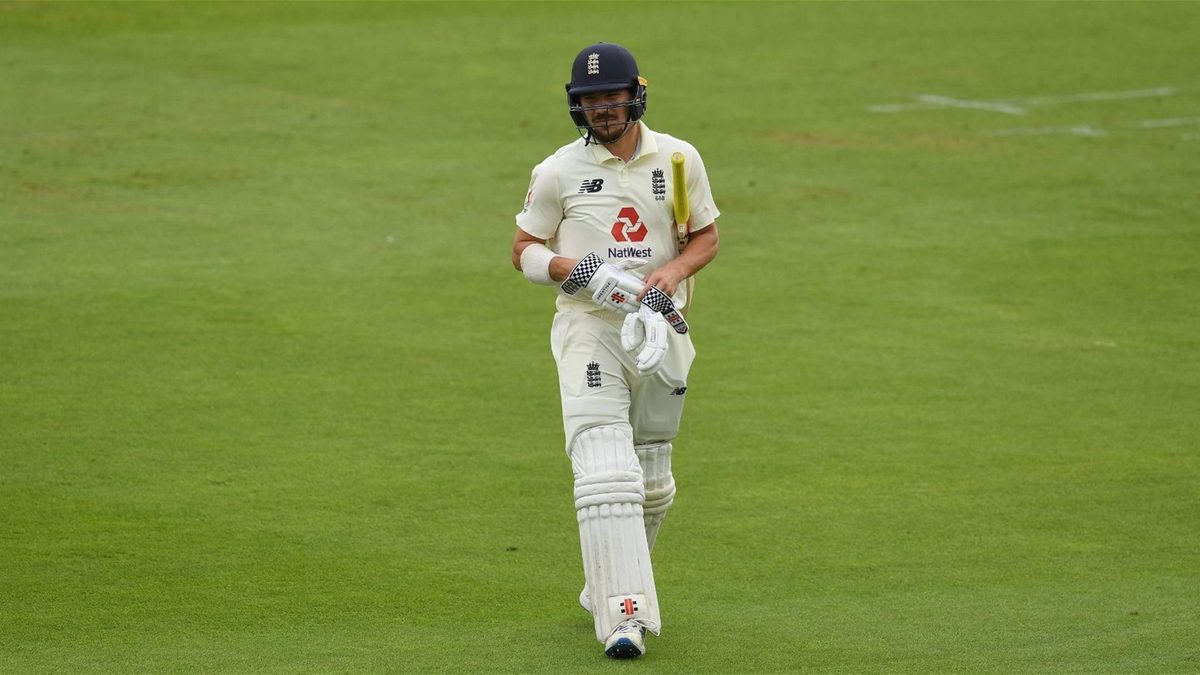
Ben Gardner wonders how long left Rory Burns has got in the England Test side, and if he’s got it in him to turn his form around.
Just over a year ago, Rory Burns was being discussed as a future England Test captain. A Boxing Day Test defeat left Joe Root’s captaincy hanging by a thread, but Burns’ stock had never been higher after a fourth-innings 84 had briefly given his side hope of a remarkable chase. His average stood only at 33.75, but since the start of the 2019 Ashes that figure rose to 44.46, including two centuries. For England fans, the shame was that he and Alastair Cook had never got to bat together. The succour was that they still had at least half a functioning opening partnership.
It was then that fate took a turn. A ligament injury sustained playing football saw him miss the remainder of England’s winter, and though he returned strongly at first, hitting 57 and 90 in a series-sealing win against West Indies, his form has since tailed off. From the start of England’s series against Pakistan to his dismissal today, he averages just 9.75.
It’s a stark figure, and so it’s worth interrogating the run further. Six of his eight dismissals have come against two bowlers, Shaheen Afridi and R Ashwin. The former was exceptional with the new ball, and will work over far better batsmen than Burns by the time he’s done. There is some mitigation there. Two of the other three, bookending a pair of first-over dismissals, offer a microcosm of Burns’ Test career against spin so far: in general, he has got set OK, but found ways to get himself out, perhaps demonstrating a lack of bankable scoring options. Over a third of his Test dismissals have been to spin, which is high for an opener, but not necessarily bad; it shows he is generally capable of getting through the new ball. But Roston Chase doesn’t make you his Test bunny without you giving a few away.
In the first innings of this series, having grafted with Sibley to put on a rousing half-century stand, an over-eager reverse-sweep caught his glove and lobbed up to the keeper. His dismissal today was less obviously egregious, but probably a more ill-advised stroke. Attempting a leg-side nudge that would bring at most a single, his closed bat face left him in danger on a pitch everyone knew all about, and an edge duly lobbed up to slip.
His poor run has come at the worst possible time for him too. Ordinarily, an average of 30.73, his overall career mark, might just about be acceptable for an English opener who has shown he’s capable of improving it. Since Andrew Strauss’ retirement, only Nick Compton, Dom Sibley and Cook average more among full-time Nos.1-2. But Jonny Bairstow will be back available for the third Test, and it’s hoped Zak Crawley will be too. The former is established as one of England’s best players of spin, and the latter is one of their brightest young batsmen.
Rory Burns from August 2019 to August 2020: 901 runs @ 45.05, 2 100s, 6 50s
Rory Burns from August 2020 to now: 78 runs @ 9.75, HS: 33#INDvENG pic.twitter.com/7yY9XHDd2s
— Wisden (@WisdenCricket) February 15, 2021
Even after India, when Bairstow might fade back into the background, Ben Foakes’ re-emergence presents a problem. Should England wish to retain him in the XI when Jos Buttler returns, the most conceivable solution seems to be pushing Ollie Pope up to No.3, and letting go of one of Crawley, Sibley or Burns. At the moment, the latter appears the most vulnerable.
All is not yet lost however. The third Test is a day/nighter, with seam and swing likely to play a larger part, which may give reason to pause on recalling Bairstow. Should Crawley not recover in time, it’s likely that, even if the Yorkshireman is brought back in, it will be Dan Lawrence, rather than Burns who misses out, with Bairstow having never opened in Test cricket.
Still, Burns is in desperate need of runs. But then we’ve been here before. At the start of that Ashes purple patch he was similarly embattled, having been worked over by Ireland for a pair of sixes after a neither-here-nor-there start in Sri Lanka and the West Indies. It was then that his greatest strengths as a cricketer came to the fore: his belief in his own game and technique, and his understanding of how it best functions and needs to be tweaked too.
Then, a net session with trusted boyhood coach Neil Stewart helped set him straight. As Wisden Cricket Monthly editor-in-chief Phil Walker wrote at the time: “A few days ago he was spied at The Oval, cramming before the biggest exam of his life. The hands had gotten too far away from his body, and the wrist-hinge had become a burden rather than a reliable source of leg-side runs. Stewart (and little brother Alec) worked with him to tighten up, and to drum into him, again, the value of abstinence. It worked: where at Lord’s he’d seemed skittish, at Edgbaston he was imperturbable.”
This time, he’ll have to turn it round without the Surrey faithful to help him, in unfamiliar surroundings faced with alien conditions. Burns has done the work and got the rewards before. Now it’s up to England to decide if they think he’s capable of doing so again.








